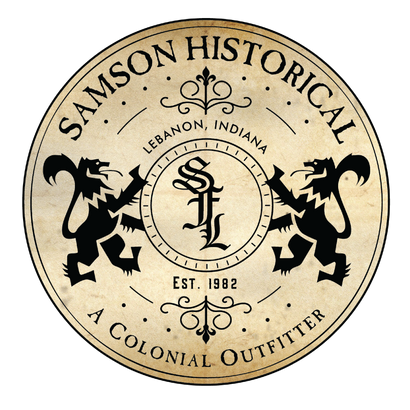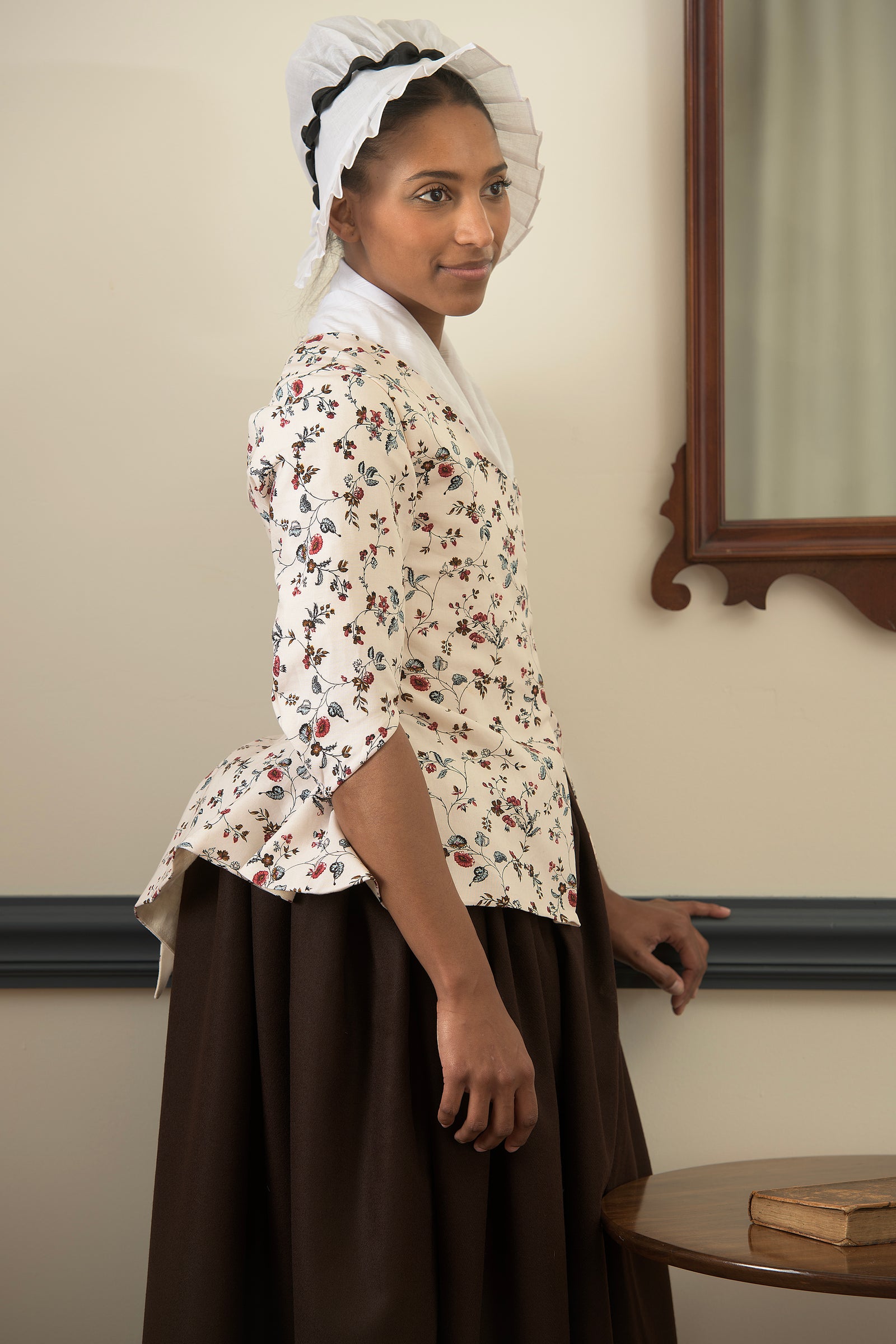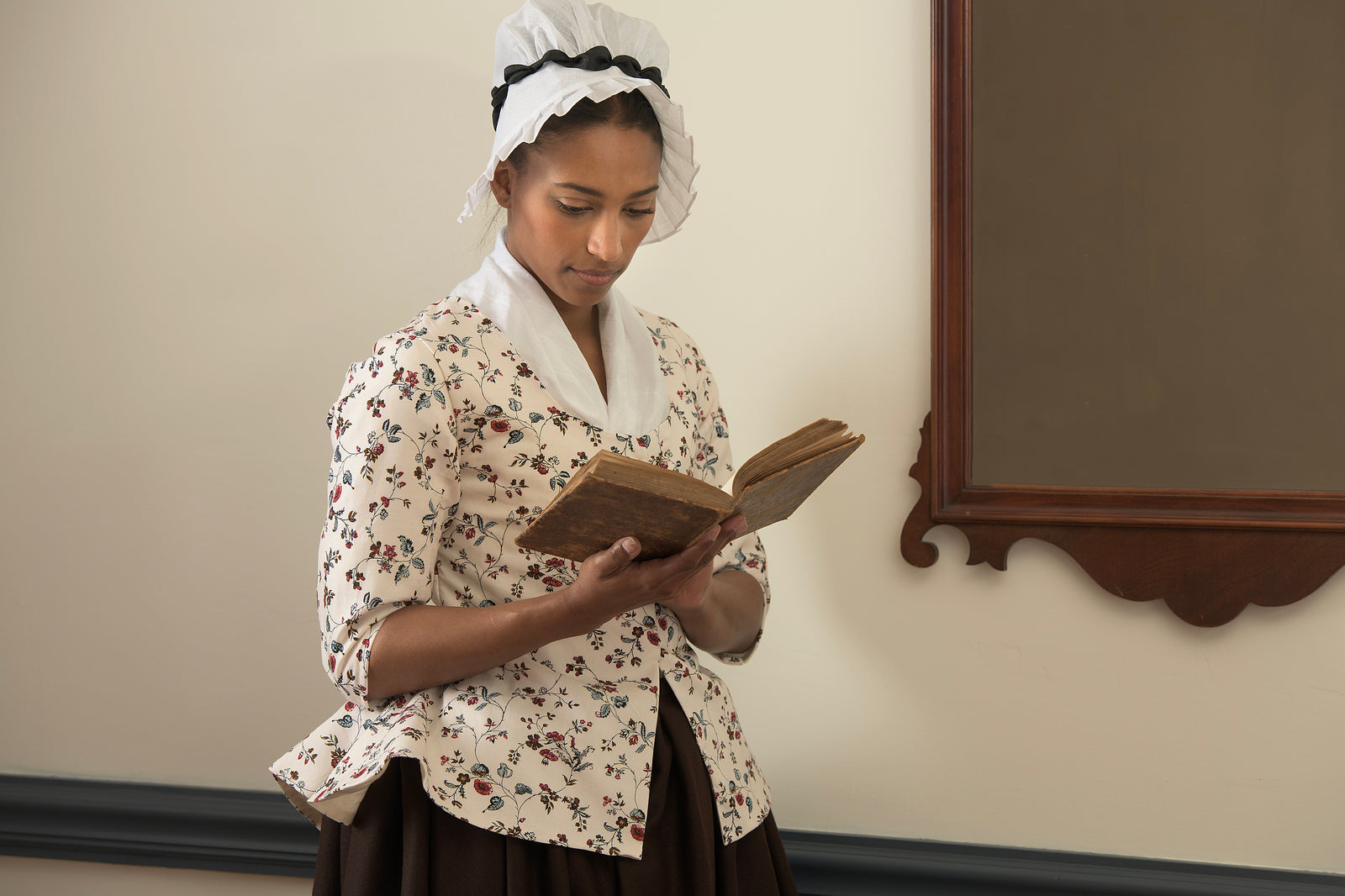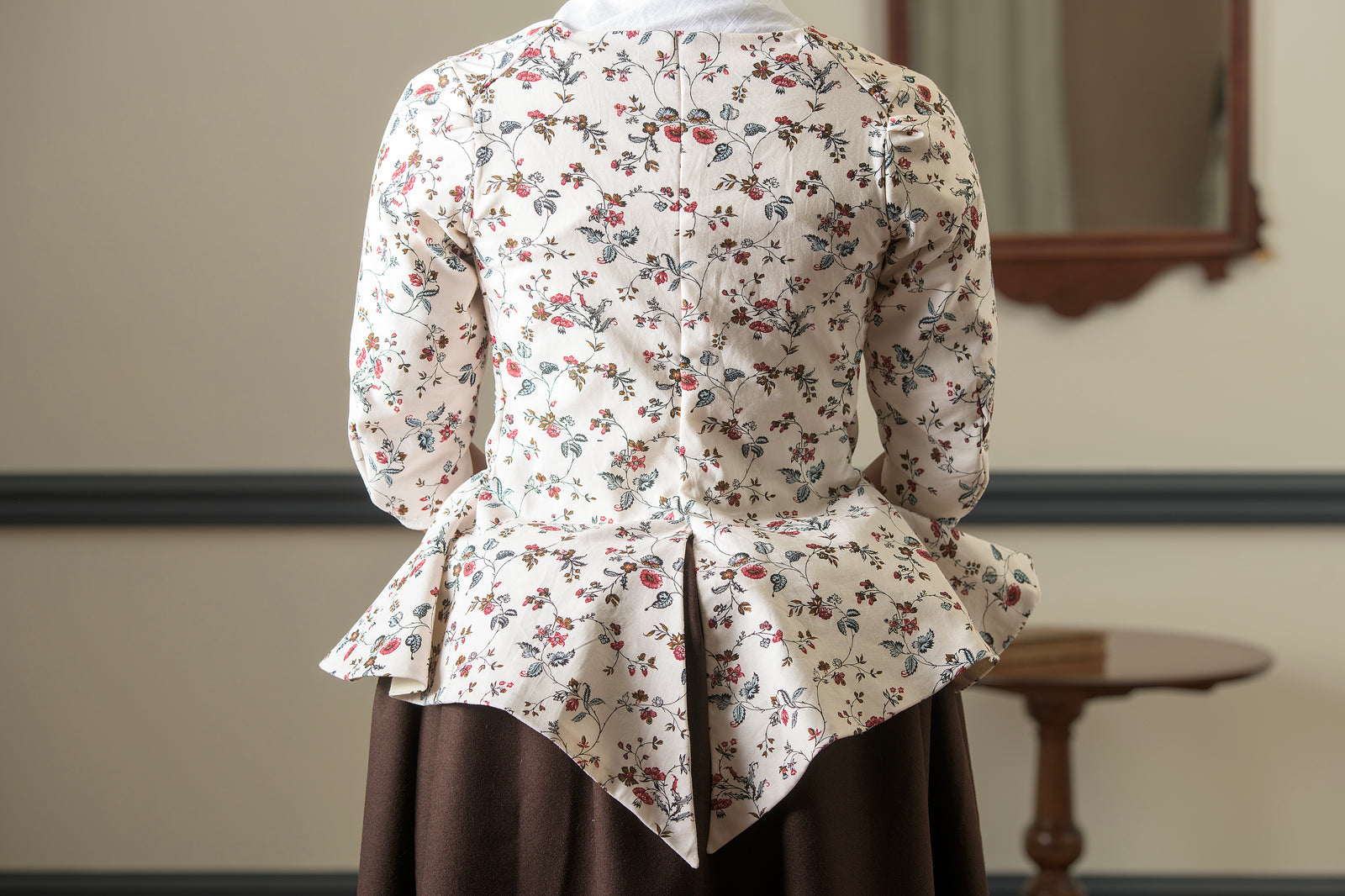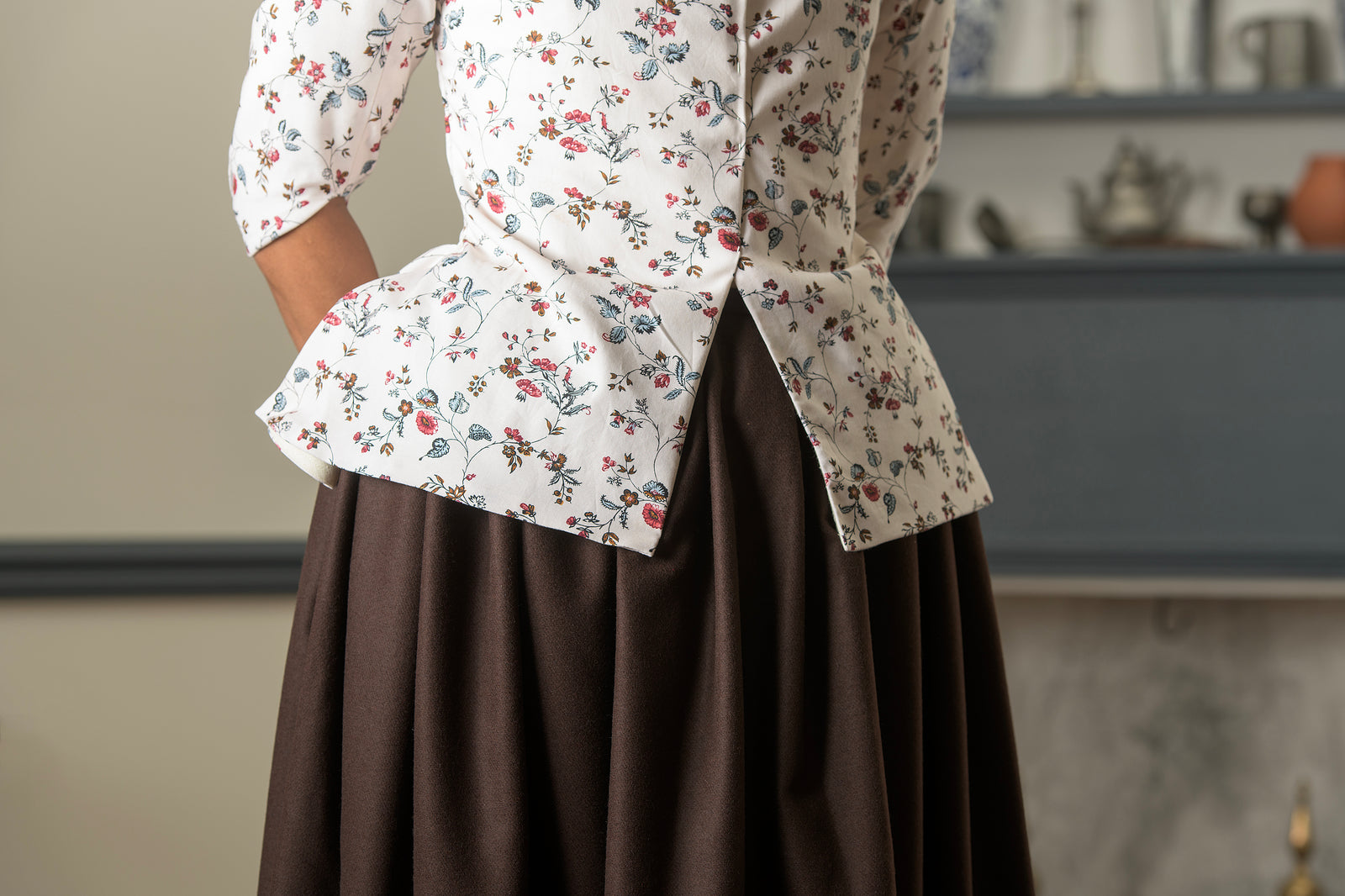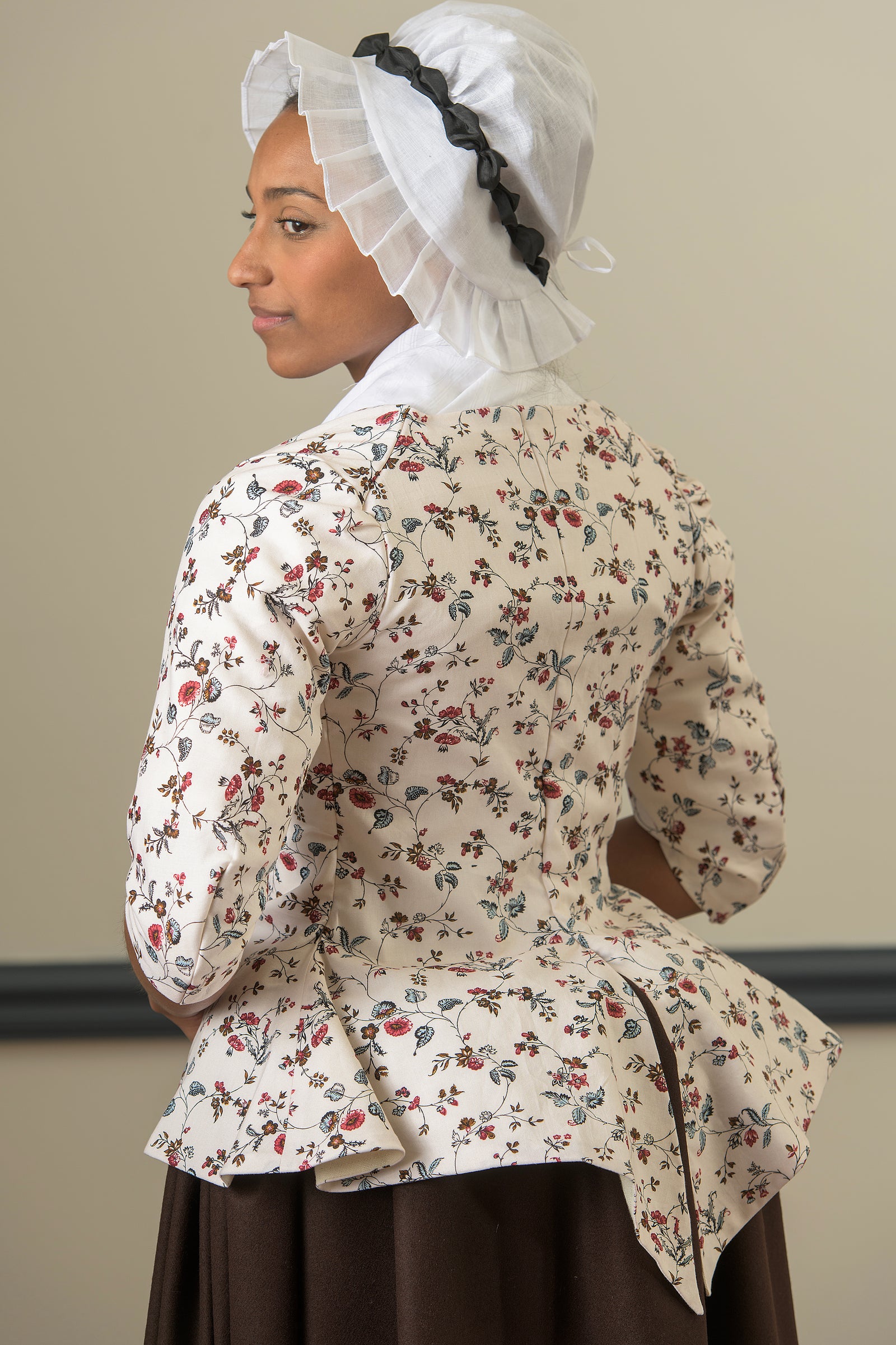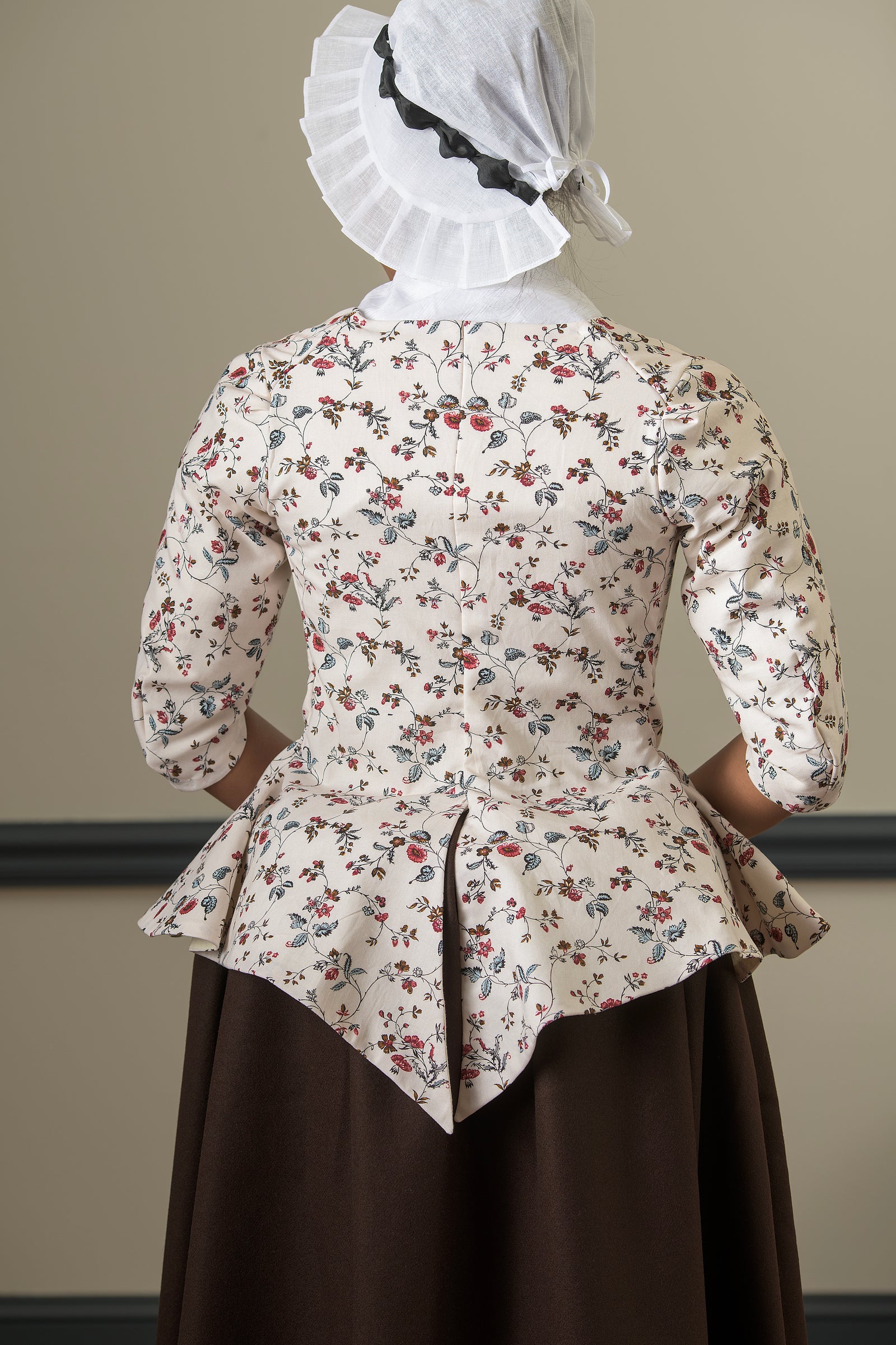You are viewing prices for canada 🇨🇦 !
You are viewing prices for canada 🇨🇦 !
Men’s Clothing
Women’s Clothing
Children's Clothing
Printed Cotton Swallowtail Jacket | Francis Open
-
This 18th-century swallowtail jacket is inspired by extant examples found in the collections of the Victoria and Albert Museum, Colonial Williamsburg, and the de Young & Legion of Honor Museum. Characterized by its fitted bodice and long, tapering tails at the back, this dramatic silhouette offered both style and practicality. Jackets were particularly popular among working women or those engaged in more active roles or daytime activities, where freedom of movement was essential but appearance still mattered.
The jacket pins closed in the front, allowing for an attractive fit when worn over stays, as was common in the period. The sleeves are shaped to follow the natural curve of the arm and end just below the elbow, providing both coverage and comfort. This construction maintains a clean and tidy appearance while the arms move unencumbered relative to other period styles.
Made from reproduction printed cotton, this jacket reflects the use of boldly patterned textiles found in original garments. Surviving examples include two in cotton—one quilted—and one quilted linen, indicating that printed materials were a popular and practical choice. The combination of piecing, shaping, and material reflects the resourcefulness of 18th-century makers.
A jacket with such a bold silhouette was also an economical choice, maximizing visual impact with minimal fabric. This balance of efficiency and style made it an appealing option across different social classes. Most appropriate for the late 1770s through the early 1780s, this jacket is a historically grounded and visually striking choice for mid- to late-18th-century interpretation.
*Measurements MUST be taken over proper stays to ensure an accurate fit* -
Historic Reproduction
This 18th-century swallowtail jacket is inspired by extant examples found in the collections of the Victoria and Albert Museum, Colonial Williamsburg, and the de Young & Legion of Honor Museum. Characterized by its fitted bodice and long, tapering tails at the back, this dramatic silhouette offered both style and practicality. Jackets were particularly popular among working women or those engaged in more active roles or daytime activities, where freedom of movement was essential but appearance still mattered.

